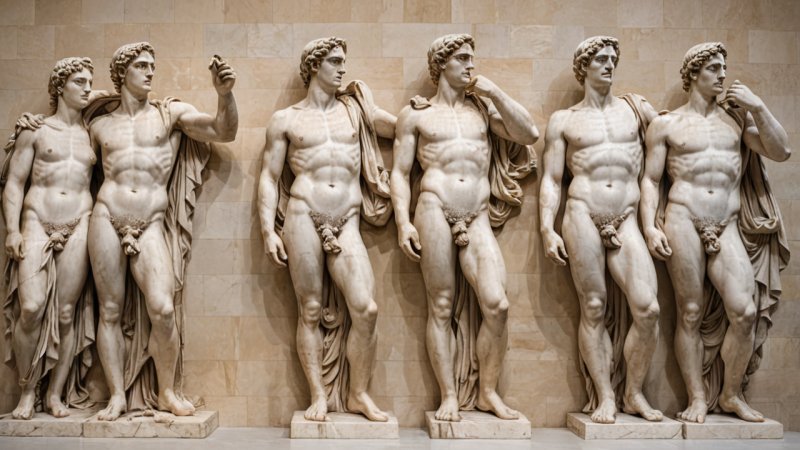The Elgin Marbles and the Parthenon Sculptures are two of the most iconic artifacts of ancient Greece, cherished for their artistic beauty and historical significance. However, their ownership and preservation have been subjects of intense debate and controversy, with arguments rooted in cultural heritage, national pride, and ethical considerations. This article aims to compare these two sets of masterpieces, highlighting their origins, current locations, and the ongoing discussions surrounding their rightful ownership.
Origins and Historical Context
The Elgin Marbles, also known as the Parthenon Marbles, are a collection of classical Greek marble sculptures that were part of the Parthenon temple on the Acropolis of Athens. In the early 19th century, Thomas Bruce, the 7th Earl of Elgin, removed these sculptures from Greece and transported them to Britain. The collection includes statues, friezes, and reliefs that date back to the 5th century BC, reflecting the artistic achievements of the time.
On the other hand, the Parthenon Sculptures refer to the original sculptures that adorned the Parthenon temple before many were removed by Elgin. The Parthenon itself, dedicated to the goddess Athena, was constructed between 447 and 432 BC and is a symbol of Ancient Greece's architectural and cultural prowess. Thus, while the Elgin Marbles are a part of the overall collection of Parthenon Sculptures, they specifically refer to those that were taken by Lord Elgin.
Current Locations and Accessibility
Currently, the Elgin Marbles are housed in the British Museum in London, where they have been displayed since the early 19th century. The British Museum claims that the Marbles are accessible to a global audience, providing educational insights into ancient Greek culture and art. However, their presence in the UK has faced backlash from various groups, particularly Greece.
In contrast, the remaining Parthenon Sculptures still reside in Athens, specifically in the Acropolis Museum, which opened in 2009 and was designed to showcase these ancient treasures in proximity to their original location. This museum offers a modern perspective on the Parthenon's history and allows visitors to appreciate the sculptures in their cultural context. While the Elgin Marbles are accessible in London, their absence from Greece has been a point of contention for many who believe they should be returned.
Arguments for Retention vs. Repatriation
The debate over the Elgin Marbles centers around two main arguments: those in favor of retaining them in the British Museum and those advocating for their return to Greece. Supporters of retention argue that the marbles are part of a global heritage and that their presence in the British Museum allows for a more diverse and international narrative of ancient art. They also claim that the museum has the resources and expertise to preserve these artifacts properly.
Conversely, proponents of repatriation argue that the Elgin Marbles are integral to Greek heritage and identity. They contend that the removal of the sculptures was an act of cultural imperialism and that their return would rectify historical injustices. The Greek government has actively sought the return of the marbles, emphasizing that their rightful place is next to the Acropolis, where they can be appreciated within the context of their origin.
Cultural Significance and Impact
The Elgin Marbles hold immense cultural significance, symbolizing not only ancient Greek art but also the complex relationship between art and colonialism. The debate surrounding their ownership raises questions about cultural heritage and the responsibilities of museums in preserving artifacts that were obtained under contentious circumstances.
In comparison, the Parthenon Sculptures are viewed as a national treasure for Greece, embodying the nation's ancient history and contributing to its identity. The ongoing dialogue about their rightful ownership continues to inspire discussions about cultural heritage, colonialism, and the ethics of museum collections. The impact of this debate extends beyond the marbles themselves, influencing how societies view and manage their cultural artifacts.
Visitor Experience and Public Sentiment
For travelers and art enthusiasts, the experience of viewing the Elgin Marbles in the British Museum is enriched by the museum's extensive collection of world art. However, the marbles themselves often evoke mixed feelings among visitors, as many are aware of the contentious history behind their acquisition. Some visitors find themselves grappling with the moral implications of viewing these treasures in a foreign land.
Conversely, visiting the Acropolis Museum allows for a more immersive experience, with the Parthenon Sculptures displayed in a space designed to reflect their original environment. The museum features stunning views of the Acropolis, enhancing the connection between the artifacts and their historical context. Public sentiment in Greece overwhelmingly supports the return of the Elgin Marbles, as many citizens believe that their presence in Athens would foster a stronger appreciation for their cultural heritage.
Conclusion
The comparison between the Elgin Marbles and the Parthenon Sculptures highlights the complexities surrounding cultural heritage, ownership, and the impact of colonialism. While both sets of artifacts are celebrated for their artistic brilliance, their histories and current circumstances differ significantly. The Elgin Marbles, housed in the British Museum, symbolize a contentious legacy of cultural appropriation, while the Parthenon Sculptures in Athens represent a vital connection to Greece’s ancient past. Ultimately, the debate over their rightful ownership continues to evolve, fostering a broader conversation about cultural heritage and the responsibilities of museums in the 21st century. The future of the Elgin Marbles remains uncertain, yet it is clear that their story is far from over.






